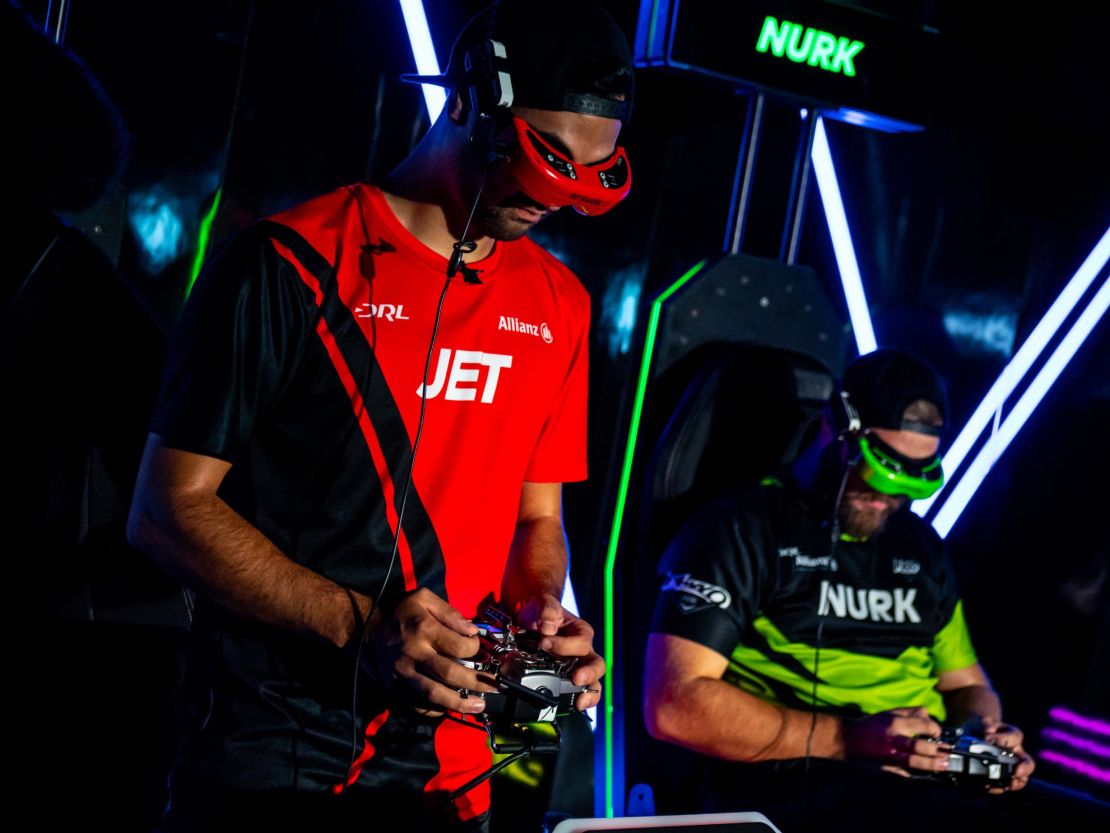With a flash of lights, the whirr of propellers and the odd crash, the race is over in the blink of an eye.
These are machines that travel from 0-80 miles per hour in under a second, their pilots requiring laser-sharp focus and rapid reflexes to navigate complex courses.
This is drone racing, a craze attracting pilots who want to be crowned Drone Racing League (DRL) world champion.
That title currently belongs to Jordan “Jet” Temkin, winner of the first two editions held in 2016 and 2017.
After winning the inaugural championship, the 26-year-old Colorado native earned a $100,000 contract to become the world’s first professional drone pilot.

“It’s just about being able to keep your act together,” he explains matter-of-factly. “Be calm, relaxed, as well as just having fast reactions.”
That is easier said than done with the added pressure of 3,000 screaming fans packed into the arena in the King Abdullah Economic City, Saudi Arabia for the 2018 Drone Racing League grand finale.
Millions more will have tuned in on television with this year’s edition being broadcast in 90 countries around the world, on channels such as ESPN, Sky Sports and FOX Sports Asia.
The DRL estimate they reached more than 50 million global broadcast viewers in their first two seasons, but it’s online where the league is really taking off.
Now with more than 115 million online views, it’s there that Saudi Arabia’s budding hopefuls were first captivated.
“I used to watch a lot of YouTube videos and I saw a lot of these drones being put into racing styles,” Saudi pilot Abdulhadi Azouz tells CNN Sport. “And I said: ‘Man, I need to get into this!’”
The pilots steer using joysticks while wearing specialized headsets which allow them to view the course from the cameras mounted on the drones.

Maneuvering through several colorfully lit gates on the course at over 80 miles per hour is hard enough in itself, but it’s even more challenging with four other drones flying in close proximity. Crashes, unsurprisingly, happen.
The hope now is that the spectacle of the grand finale can inspire Saudi prospects to take the step up and become world champions.
“In Saudi Arabia it’s a growing sport,” says Nouf Al-Rakan, the CEO of the Saudi Federation for Cybersecurity, Programming and Drones.
“To help increase the demand and at the same time teach our Saudi pilots, we thought of bringing this championship to Saudi Arabia.”
With $100,000 up for grabs again in 2018, the pressure is on.



